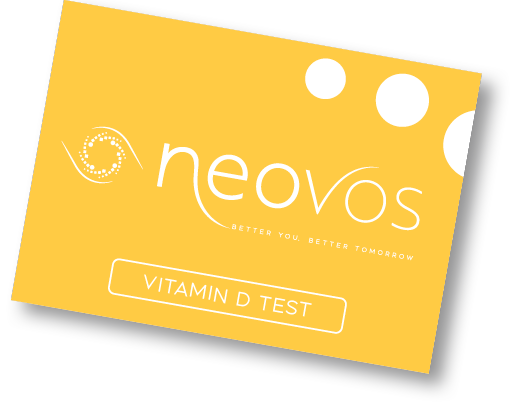
The link between vitamin D and painful periods
A staggering third of all women are affected by menstrual disorders, and with less stigma around this subject, it is easy to understand why research into this area is growing. Recognising why you may have a menstrual disorder is vital, not just in terms of combating your physical symptoms but also from an emotional perspective. Suffering from issues such as heavy bleeding, painful periods (known as dysmenorrhea) or an irregular cycle can be concerning and not knowing why this is happening to you or what you can do about it can really take its toll.
Why might you get painful periods?
Whilst it is not fully understood, there has been a belief for many years that the overproduction of compounds called prostaglandins is involved. Prostaglandins are made from the omega 6 fatty acid, arachidonic acid, and they cause hormone-like effects on different tissues around the body. The release of prostaglandins is a normal part of the menstrual cycle, but in dysmenorrhea (painful periods), where lower abdominal pain is experienced just before or during menstruation, it is believed that too many prostaglandins are released. This causes narrowing of blood vessels in the uterus and hyperactivity of the muscles in this area, which can result in pain. Some studies have also noted an increase in other pro-inflammatory compounds in women with dysmenorrhea, which can increase the production of prostaglandins.
What is the relevance of vitamin D in dysmenorrhea (painful periods)?
Vitamin D, provided by sunlight and commonly known as the sunshine vitamin, has several roles in pain reduction such as:
- Reducing inflammation that is associated with increased nerve sensitivity and chronic pain.
- Limiting damage to the nervous system and consequent pain by its involvement in nerve cell development, maintenance and survival.
- Helping to reduce the overproduction of nitric oxide. Nitric oxide is naturally produced by the body, and levels have been found to be much higher than normal in some studies assessing causes of dysmenorrhea.
- Inhibiting the activity of prostaglandins, which as mentioned above may be involved in dysmenorrhea (painful periods).
Is a vitamin D deficiency linked to other menstrual disorders?
Given the fact that vitamin D receptors can be found throughout the reproductive organs, including in the ovaries, endometrium and fallopian tubes, it is unsurprising that research has found that a vitamin D deficiency may contribute to several menstrual issues, such as painful periods, irregular cycles, PCOS (Polycystic Ovarian Syndrome), endometriosis and uterine fibroids. Consequently, studies have found that supplementing with it may help to counter these menstrual disorders. One research paper, which reviewed 28 separate studies involving 700 women, concluded that supplementing with vitamin D resulted in significantly lower levels of pain and recommended vitamin D supplementation as an alternative treatment for relieving pain symptoms of primary dysmenorrhea. Another study involving vitamin D deficient students found that those who supplemented with vitamin D experienced a significant reduction in inflammation markers and an improvement in PMS symptoms.
Based on the research available, there does appear to be a clear association between vitamin D and menstrual disorders and emphasises the need to regularly monitor vitamin D levels.
How can you find out what your vitamin D level is?
Most people think of going to the GP for their test; however, routine vitamin D testing is not always available from a medical practitioner, unless someone is showing signs of a deficiency. As the link between menstrual disorders and vitamin D is largely unknown, it is unlikely that a GP would consider the possibility that a menstrual disorder could be a sign that someone is vitamin D deficient. Therefore, using an at-home finger prick test can be a great alternative if you have a menstrual disorder and would like to check if vitamin D deficiency is a factor. It also has a number of benefits over alternative vitamin D tests. For instance, it can:
- Reduce the hassle, and potential pain and anxiety of having a blood draw done through your GP.
- Provide you with research-backed results that may consider 50-75 nmol/L to be inadequate, a level which would normally be deemed adequate if done through a medical practitioner.
- Be more sensitive, accurate and useful than a lateral flow vitamin D test. Lateral flow tests are required to be read within a certain timeframe, as results can change if left too long. Lateral flow tests also only give you a ‘deficient’ or ‘not deficient’ answer, rather than a specific vitamin D level. This makes it impossible to know how much supplementation is required and for how long.
- Keep things simple. You simply prick your finger, provide a few drops of blood on a card and post it off to the lab. It is easy to do, and usually very affordable.
One such at-home test kit that measures your level of vitamin D is the NeoVos vitamin D test. More information can be found here.
What if levels are low?
It really depends on how low your level is, as to how to rectify it. Unless you have a deficiency you’re often not given any further information other than the result. In contrast to this, the NeoVos test provides you with a report that not only lets you know your result but also gives you specific diet, lifestyle and supplement recommendations based on that result. If you’re severely deficient you may need to take a loading dose and then follow it with a maintenance dose. If your level is insufficient but not severely then you should be able to increase it through safe sunlight exposure, diet and a standard vitamin D supplement. However, seeking assistance from a BANT registered nutritional therapist can be helpful if you are in this situation and feel that more individual support is required, particularly if things aren’t so straightforward.
Can some people be more at risk of a vitamin D deficiency?
For instance, sometimes your ability to raise your vitamin D level may be impacted by factors such as your:
- Genes – you may have a genetic mutation that makes it harder for you to convert sunlight into vitamin D in the body.
- Weight – vitamin D is stored in fatty cells known as adipocytes so people with higher body fat will tend to store more vitamin D, meaning there’s less circulating around the blood and being used by the body.
- Ethnicity – people with darker skin tend to produce and store vitamin D less effectively, partly because of UV-B rays being blocked by melanin, the substance responsible for hair and skin pigmentation, which you have more of if you have darker skin.
- Age – older people not only have a lower capacity to produce and metabolise vitamin D but if getting around is an issue they may spend less time outdoors too.
- Limited exposure to sunlight – sunlight can be a bit of a luxury in northern hemisphere countries like the UK, particularly in the winter months, making low vitamin D levels much more likely. Equally, even if the sun is shining and you’re spending lots of time indoors, you run the risk of being vitamin D deficient.
Generally speaking though, if you can do the following, then topping up vitamin D shouldn’t be a problem for most people:
- Spending 20 minutes a day in sunlight, without sunscreen and with as much exposed skin as possible, preferably between the hours of 10am and 2pm. Upon exposure to sunlight, the skin absorbs UV-B, which eventually gets converted into vitamin D3.
- Although low in vitamin D, consuming foods naturally containing or fortified with vitamin D e.g. oily fish, dairy, eggs, mushrooms, may help to moderately increase your vitamin D level.
- Taking a vitamin D3 supplement, particularly outside the summer months, when sunlight is low. It is important to ensure that it also contains vitamin K2 to avoid a build-up of calcium in the blood rather than the bone (known as hypercalcaemia).
In conclusion…
Whilst there are different treatment options available for menstrual disorders including painful periods, many of them can come with unwanted side-effects, which can add to the worry you may already be feeling if you’re someone who is experiencing menstrual irregularities. Therefore, it can be life-changing to know that your symptoms may be addressed with something that is completely natural and is relatively easy to obtain. What’s more, vitamin D plays a crucial role in all aspects of your health, including immune function, bone and muscle health, and mood regulation. Consequently, ensuring that you have enough of this vital nutrient by regularly testing and, if necessary, supplementing may not just have an impact on your menstrual cycle but could offer other benefits to your overall health as well.
For any references on the above, please message us and we would be happy to provide them.

